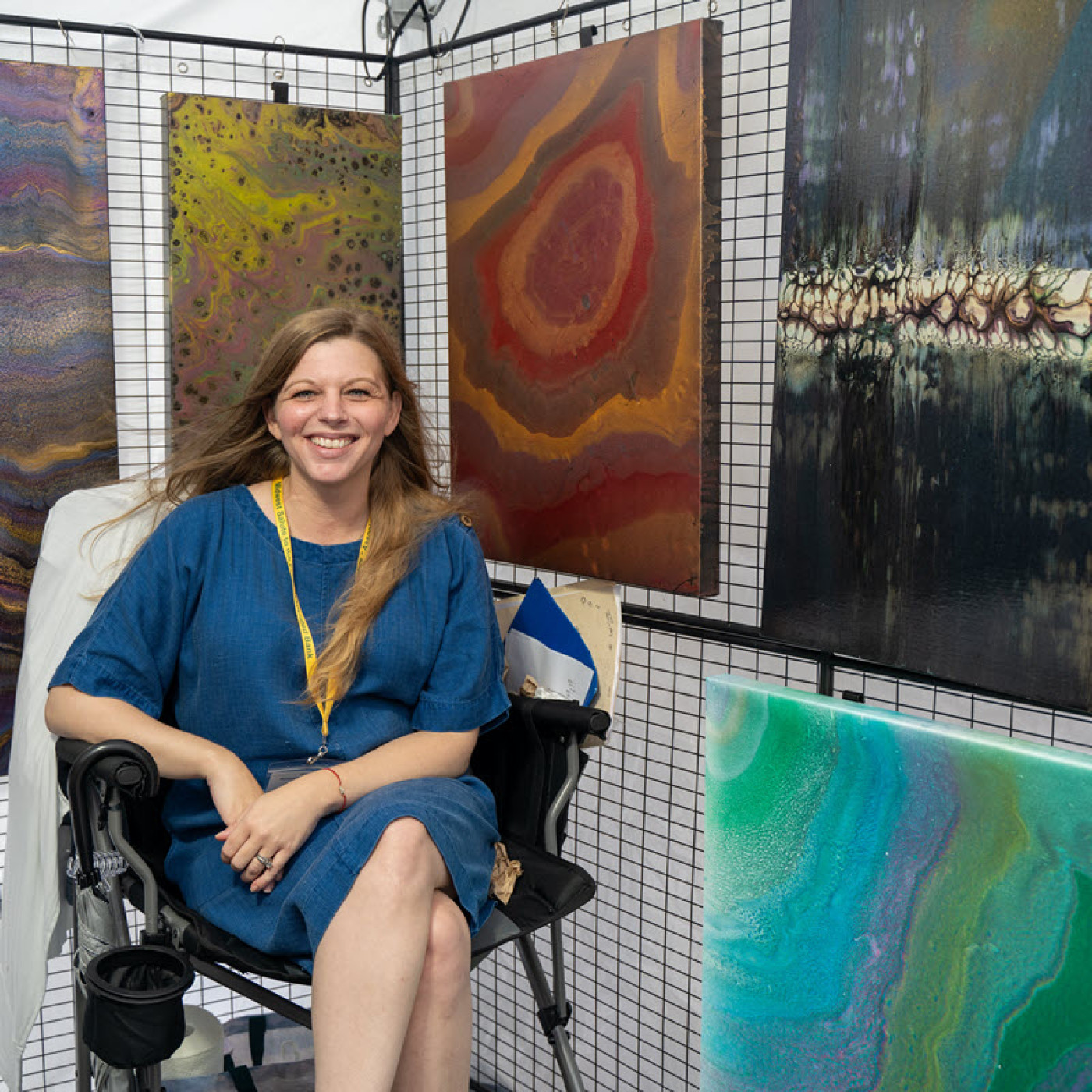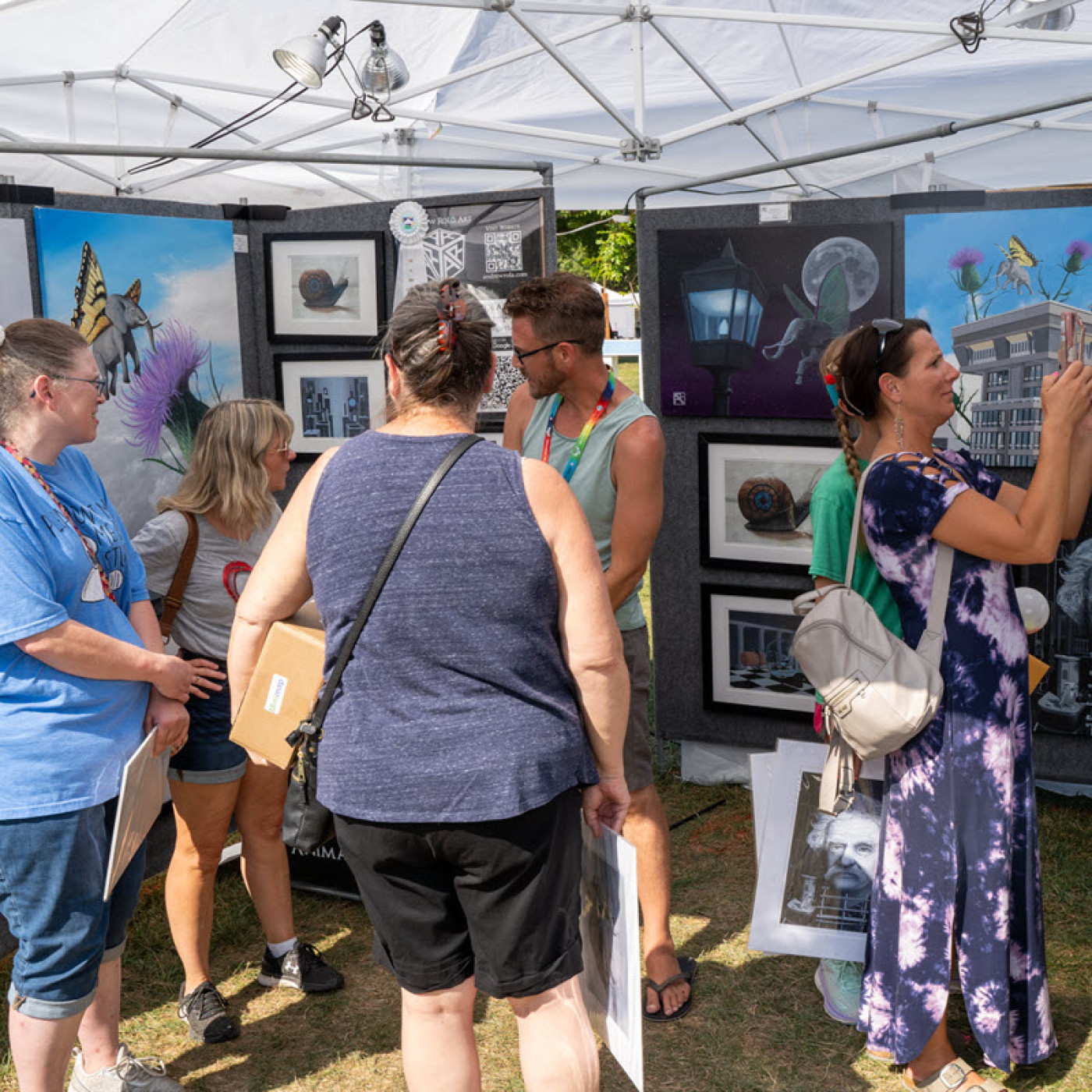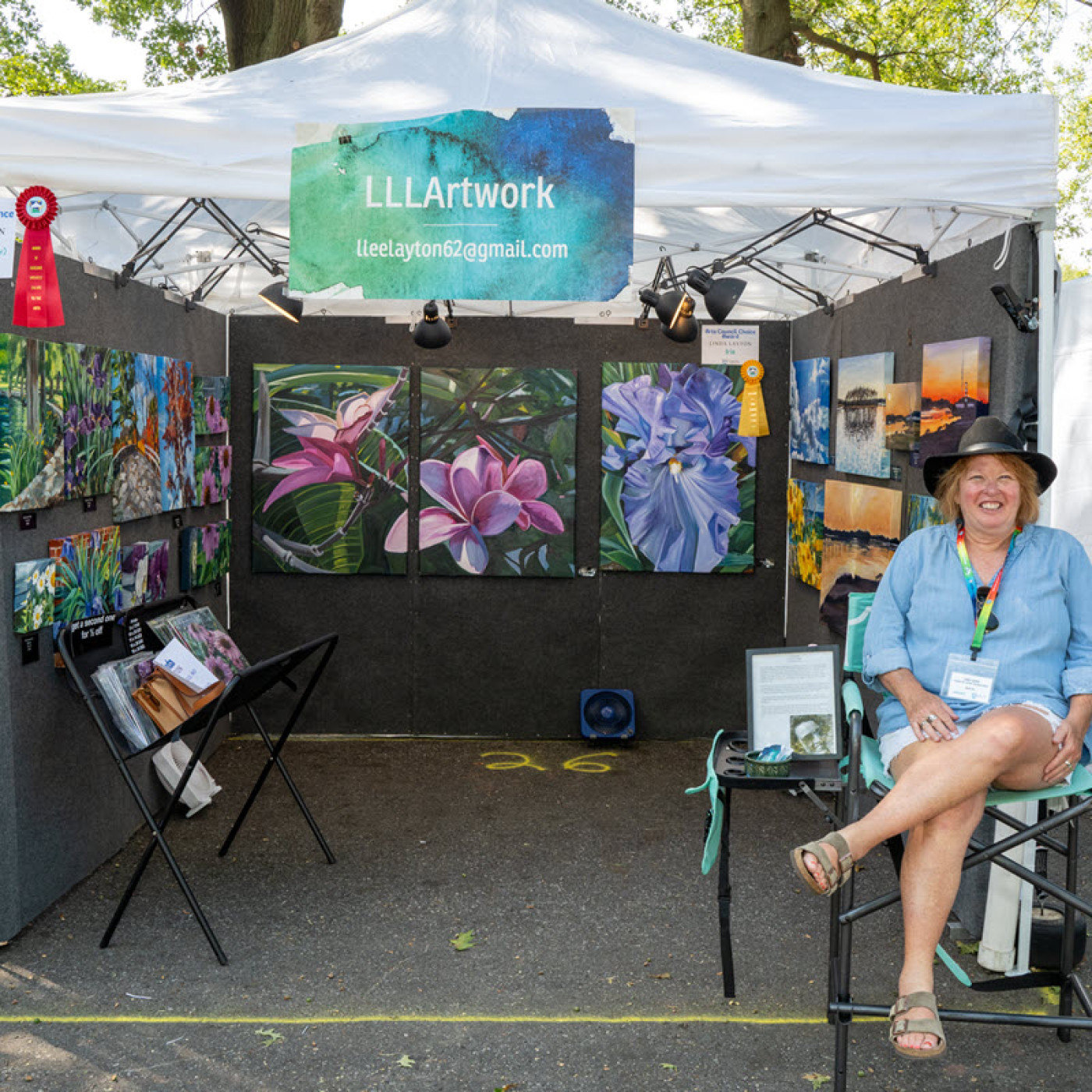Sales Techniques Tips To Get Your Work Out There
When a nonprofit artist guild in the St. Louis area asked me to speak about how artists can get their work out there, I concluded that it is a euphemism for how they can sell more work.
That organization and most or all its members know how to get their work out there. I suggested it is also about how to get you — the artist — out there.
In my experience as a gallery curator and as a director of Midwest Salute to the Arts, most of the sales I have observed occur in the artist’s presence. At the gallery, almost all of them occur during the artist’s opening reception and when the exhibiting artist gets out there with the interested art aficionados.
For Midwest Salute to the Arts, all 100 artists go through the same process to get accepted, set up, and fill their 10 x 10 booth. They spend the same three days in the same extremes of weather.
Many of the same 5,000 people visit those 100 booths. Some visits result in sales, and some do not. Is there a particular formula to it? Probably not.

Make an Impact
How you set up your booth and how accessible you are in it are ways to make an impact. We see a definite correlation between an artist’s accessibility and the accessibility of their artwork.
While someone purchases artwork because of being drawn to it, what often tips the balance between sale and no sale is the subliminal effect of meeting the artist. Friendly commentary between an artist and attendee can increase a piece’s desirability. An artist’s personal touch of explaining the inspiration behind their work can increase a patron’s interest in it.
You must be a central focus within your booth display. Make your booth inviting to those passing by. Be noticeable in or around your space, as well as available and fun.
Demonstrate how excited you are about your work. Be your art. Do not try to be a high-pressure salesperson — be a magnet that complements your accomplishments.
Avoid Distractions
Playing loud music in your booth, accepting calls on your cellphone while patrons are visiting it, and hanging out with friends instead of attendees are all things to be avoided. These distractions can affect your neighboring artists as well.
Strike a balance between talking to more than one patron at the same time. Make each attendee feel noticed, appreciated, and like they are the most important person in your life at that moment.

Factor in Dynamics
Put your gorgeous, huge wall hanging where it catches as much attention as possible. Its dynamic may cause attendees to stop, look, and be amazed at your talent.
Do not underprice your work. Tag it as the premium piece you know it is and complement it with smaller, less expensive pieces and prints.
If someone cannot afford your huge pieces, provide them with artwork they can afford. Provide options for those who may live in a small apartment that lacks a wall to accommodate larger works. Selling a small piece is still a sale.
Close the Sale
During a past marketing job, I was part of a coaching session with Tony Robbins. I learned efforts that resulted in very few sales meant I was missing what he called the closing.
While good at leading my horses to water, I was not good at getting them to drink it. I presented my clients with wonderful opportunities they did not buy. I consistently failed to close the sale.
What did it mean to miss the closing? It meant failing to end with a final question or statement.
Will that be card or cash? Which one do you want — the framed original or a matted print? How shall I wrap that for you? I will hold that piece for you while you finish your tour of the rest of the festival.
Saying something with such certainty makes it easy for the attendee to purchase work from you. Does it result in a sale every time? It does not.
But it sure increases the odds over not engaging the person in what they already want to do. And that is to take home a beloved piece of artwork created from your hand.

